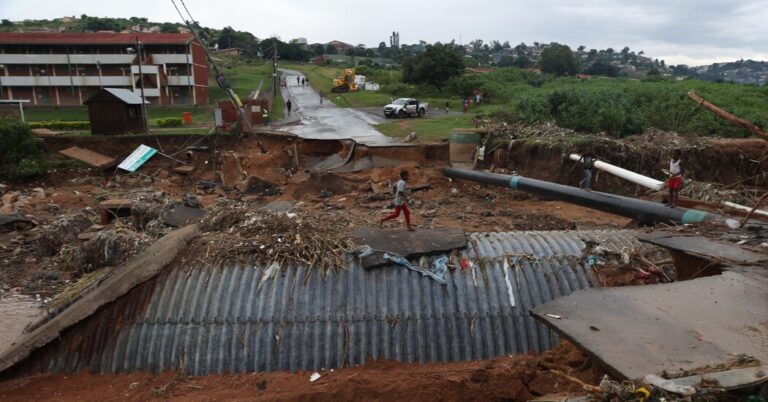SpaceX and Axiom Launch Ax-3 Mission to International Space Station: Video
A private mission launched four astronauts to the International Space Station on Thursday.
Unlike on earlier such flights, none of the passengers are wealthy space tourists paying their own way to orbit. Instead, three of the crew members are sponsored by their nations — Italy, Sweden and Turkey. For Turkey, the crew member is the country’s first astronaut.
The flight, by Axiom Space of Houston, is part of a new era where nations no longer have to build their own rockets and spacecraft to undertake a human spaceflight program. Now they can simply purchase rides from a commercial company, almost like buying a plane ticket.
The astronauts were riding in a SpaceX Crew Dragon capsule on top of a Falcon 9 rocket, launching from NASA’s Kennedy Space Center in Florida. After a day’s delay for additional checks of the vehicle, the countdown proceeded smoothly, the rocket’s engines lighting up at 4:49 p.m. Eastern time.
The spacecraft is expected to arrive at the space station early Saturday morning.
The private astronaut mission, Ax-3, is the third for Axiom, which is also developing its own space station and making new spacesuits for NASA. It chartered this rocket flight from SpaceX, and has been sending paying customers for two-week stays at the International Space Station since 2022. In 2019, NASA opened up its part of the space station to visitors, a reversal from earlier policies. (Russia has hosted a series of space tourists on the International Space Station since 2001.)
For the European Space Agency and its 22 nations, commercial flights like Axiom’s offer a way of getting more Europeans to space and highlight the mixing of traditional and commercial space programs.
ESA is currently paying 8.3 percent of the space station’s costs and thus its astronauts receive that fraction of the six-month assignments there. That currently corresponds to just four flights from now until the space station’s scheduled retirement in 2030.
“We don’t have so many flights, so we can’t give every member state an astronaut,” said Frank De Winne, the head of ESA’s astronaut office. “That’s impossible.”
But Marcus Wandt, the Swedish astronaut on Thursday’s Axiom flight, will get to the International Space Station by flying commercial.
“If Axiom wouldn’t have had this option available, it wouldn’t have happened now,” Mr. Wandt said during a news conference last week.
Mr. Wandt, a fighter and test pilot, applied to become an astronaut at ESA a couple of years ago. From 22,500 applicants, he made it to the final round of selections but was not one of the five whom ESA chose as new full-time astronauts.
He was, however, named a “reserve” astronaut. These are unpaid positions, but reserve astronauts are eligible for training and a mission to space if a commercial opportunity arises and their country is willing to pay for the ticket.
“This is why we created the reserve corps,” Mr. De Winne said.
The Ax-3 crew members are not the first government astronauts to pay their way to orbit in this fashion.
The United Arab Emirates purchased a flight on a Russian Soyuz rocket for an eight-day stay at the International Space Station in 2019 for one of its astronauts, Hazzaa Al-Mansoori. Axiom Space arranged a six-month stay on the space station for a second Emirati astronaut, Sultan Alneyadi, in 2023. Saudi Arabia also flew two astronauts to the International Space Station on the last Axiom flight last year.
In March, Swedish officials heard that Axiom had an empty seat on this private astronaut mission. “If we could make a quick decision, this was a possibility for us to do that,” said Anna Rathsman, director general of the Swedish National Space Agency.
“We realized that this kind of opportunity, it doesn’t happen very often,” said Mats Persson, the Swedish minister for higher education, research and space. “And when we got it, we took it.”
Sweden, with financial contributions from the space agency, Sweden’s armed forces and companies like Saab, paid close to 450 million Swedish krona, or about $43 million, for Mr. Wandt to go to space. That is less than the $55 million that Axiom had initially said in 2018 that it would charge for a seat. (Axiom now declines to disclose the cost.)
With the agreement in place, Mr. Wandt was promoted from reserve astronaut to project astronaut — a one-year paid position for this mission. The work he will conduct on the space station includes an experiment identifying the effects of weightlessness on stem cells and how architectural settings in space affect the physical and mental well-being of astronauts.
Other members of ESA have also signed up for future Axiom flights. Similar to Sweden’s arrangement for Mr. Wandt, Poland has an astronaut, Slawosz Uznanski, who is another of ESA’s reserve astronauts, lined up for a future Axiom flight. The United Kingdom Space Agency has also signed an agreement with Axiom to fly its astronauts to orbit.
On this flight, the other crew members include Alper Gezeravci, a fighter pilot in the Turkish Air Force, and Walter Villadei, a colonel in the Italian Air Force.
As the first Turkish astronaut, Mr. Gezeravci hopes to serve as an inspiration for future generations in his country.
“This spaceflight is not a destination of our journey,” he said during the crew’s news conference. “This is just the beginning of our journey.”
Mr. Villadei of Italy, the mission’s pilot, has already been to space, but just for a few minutes. He was one of three Italian Air Force members who flew on a Virgin Galactic suborbital flight in June last year, conducting several experiments in biomedicine, fluid dynamics and material sciences.
Although Italy is also a member of ESA, the trip was arranged for Mr. Villadei by the Italian Air Force, not the country’s space agency.
Serving as the mission’s commander is Michael López-Alegría, a former NASA astronaut and now chief astronaut at Axiom. NASA is requiring that private astronaut missions be led by a former NASA astronaut.
Other nations have also pursued the commercial approach to human spaceflight, and the idea is not a new one.
More than a decade ago, Robert Bigelow, who made his fortune in real estate, including the Budget Suites of America hotel chain, was planning to launch private stations that would be leased to paying customers, primarily nations, which it called, “sovereign clients.”
Mr. Bigelow’s company, Bigelow Aerospace, signed memorandums of understanding with countries like the Netherlands, Singapore, Sweden, Australia and Britain.
Because of delays in the development by other aerospace companies of spacecraft that would take people to and from the space stations, Bigelow’s plans never got off the ground.
Still, Michael Gold, who was then director of the Washington office of Bigelow Aerospace, said that Bigelow’s early efforts helped make space for what Axiom is doing now.
Mr. Gold said that at the time, a foreign space tourist would have to have been accompanied by someone from the U.S. Defense Technology Security Administration to make sure that the tourist would not gain knowledge of any regulated aerospace technologies.
In the end, federal officials decided that was unnecessary.
“That’s a great example of how the early work that we did at Bigelow Aerospace was a trailblazer for creating the ecosystem that Axiom Space and any other companies are taking advantage of today,” said Mr. Gold, now chief growth officer at Redwire, a space infrastructure company.
Check out our Latest News and Follow us at Facebook
Original Source







